Table Of Contents
Introduction
Bao Quoc Pagoda is one of the oldest and most sacred pagodas in Hue. As you know, each pagoda covers the vicissitudes of history, delicate architecture, as well as ancient stories. Visiting this pagoda to admire the beauty of culture and worship since the 17th century. And, listening to mysterious stories about the “Ham Long Well” ( also called the forbidden well). It will be a great experience when you set foot on the land of the ancient capital.
In addition to immersing in the dreamy and hidden beauty of nature and admiring the ancient mausoleum architecture. When traveling to Hue, do not forget to visit Bao Quoc Pagoda. Exploring this spiritual tourist destination will help you find peace and tranquility in your soul!
Bao Quoc Pagoda’s Location
Located on Ham Long hill, no. 17, Bao Quoc Street, Phuong Duc Ward, Hue City. Bao Quoc pagoda was built in the shape of the word “Khau” (Mouth) by Zen Master Giac Phong in the 17th century, during the reign of Lord Nguyen Phuc Tan.
During the reign of King Le Du Tong, the Bao Quoc pagoda in Hue was named Ham Long Son Thien Tho Tu pagoda. In 1747, Lord Nguyen Phuc Khoat restored the pagoda and gave the pagoda a kanji signboard “Sac Tu Bao Quoc Tu”, which means National pagoda.
History Of Bao Quoc Pagoda
In 1776, the pagoda was damaged and downgraded seriously. Until 1808, Empress Hieu Khuong rebuilt the pagoda, built the Tam Quan gate, created many Buddha statues, and cast the Bao Khanh, Dai Hong Chung (a big bell). The Big Bell weighed 826 kg, 1.4m high, and had a diameter of 1.2m.
In addition to rebuilding the pagoda, Empress Hieu Khuong asked for 30 acres of wetland and 10 acres of dry land to donate to the pagoda. Also, she intervened to regain 22 acres of land appropriated under the Tay Son dynasty to return to the pagoda.
Additionally, the Empress invited Zen Master Pho Tinh to do the abbot. At the same time, King Gia Long decreed to change the name of the pagoda to Thien Tho Tu.
In the Nguyen Dynasty, in 1824, King Minh Mang visited the pagoda and adopted the name “Bao Quoc Tu”. Because the word Thien Tho refers to the mountain and tomb of King Gia Long, namely Thien Tho Son and Thien Tho Lang. Later on, the King held great precepts at the pagoda on the occasion of the fourth week of the longevity ceremony in 1830.
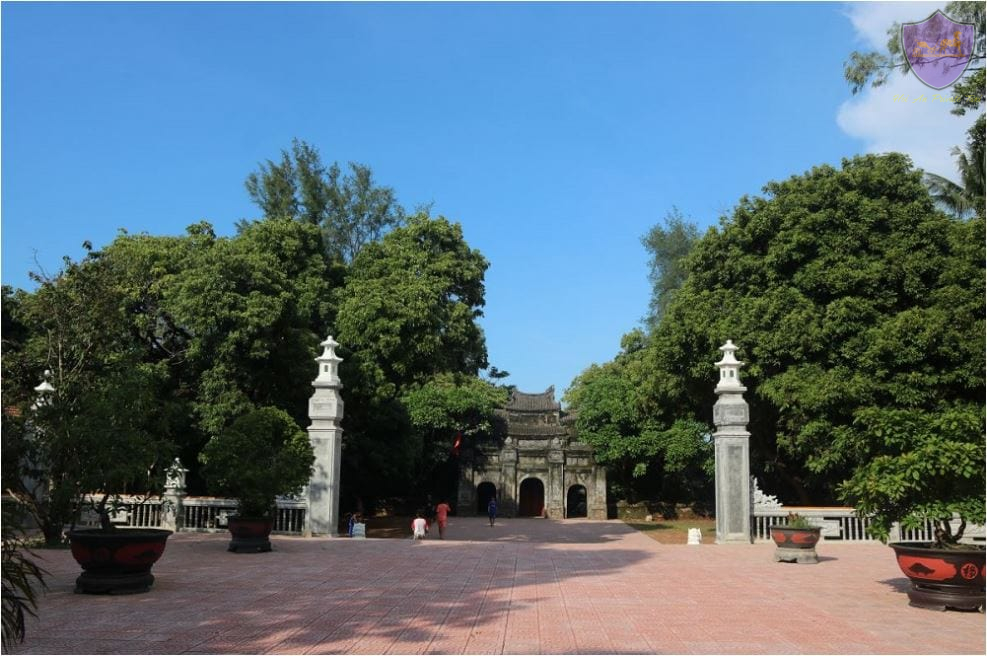
Nevertheless, in 1858, the pagoda was badly damaged, so King Tu Duc and Huang Empress Dowager Tu Du gave money to restore the main hall and other works. During the reign of King Tu Duc and the reign of King Thanh Thai, two Emperors held many big ceremonies at the Bao Quoc pagoda.

During the Buddhist revival movement in the 1930s, the pagoda made many contributions in terms of training monks for Buddhism. Furthermore, in 1935, the Buddhist Primary School was opened at the pagoda. In 1940, the Buddhist College was also opened here. Today, Bao Quoc Pagoda is the place where Hue Buddhist Intermediate School is located.
How To Visit The Pagoda
You can ride a bike, drive a scooter with helmets, or book a Hue Buddhist Tour- Private Tour with Hoi An Private Taxi to visit Hue Buddhist pagodas, especially Bao Quoc Pagoda. Besides, there is also have Thien Mu pagoda in Hue that you cannot miss. When you book our Hue Buddhist tour, you will have the opportunity to see the hidden beauty of the most sacred and wonderful pagodas. Besides, you also enjoy the greatest vegetarian food.
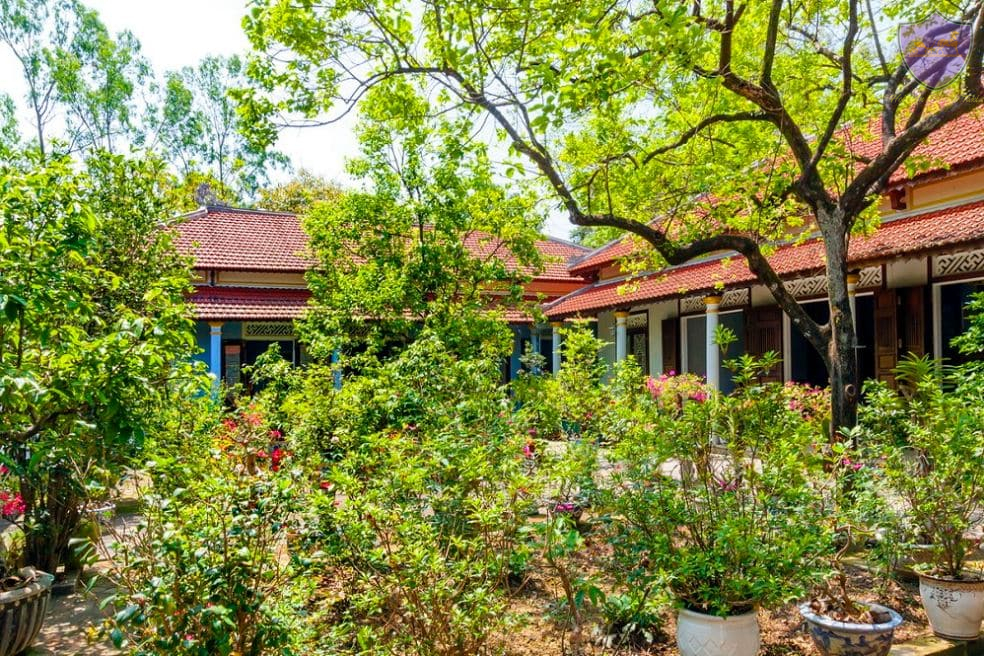
If you bring a kind heart toward Buddha. By visiting the pagoda, you will receive peace of mind and purity in your soul. Therefore, do not forget to add this place to your journey to discover the ancient capital!
The Architecture Of Bao Quoc Pagoda
This pagoda has a campus area of about 2 hectares. The outermost is the massive Tam Quan gate with a few dozen high stairs that still preserve the time stamp. With the ancient mossy features that have existed for a long time.
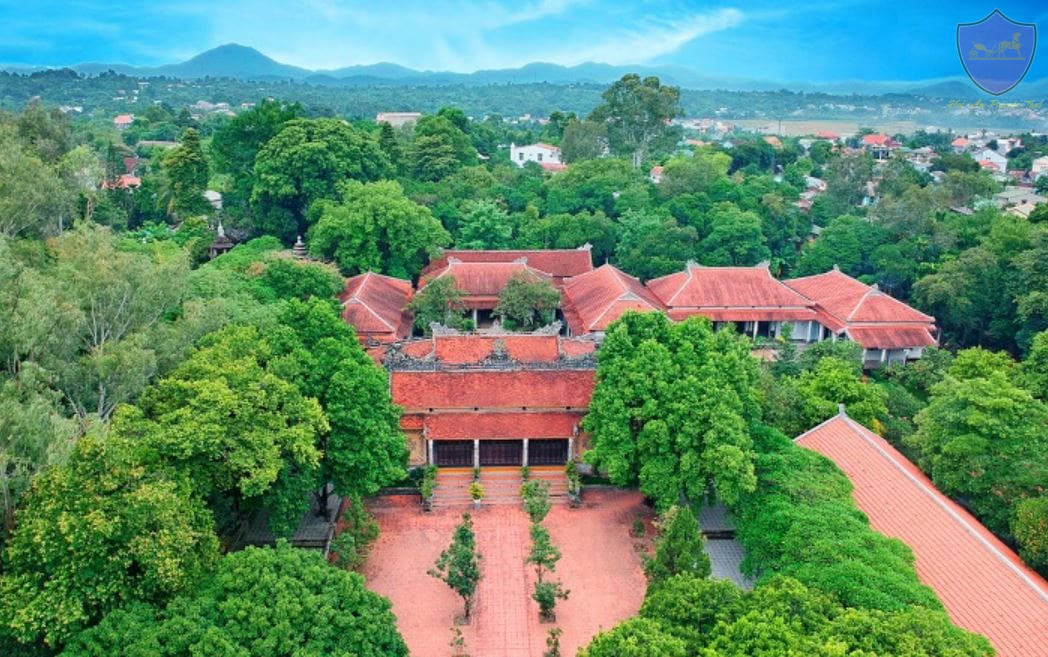
Going inside, right behind the Tam Quan gate (Three-Door gate), visitors will see a large courtyard with many shady green trees. It creates a fresh, relaxed, and tranquil space for the pagoda, and at the end of the yard is the main hall area. The space in the middle is a bonsai garden. This type of architecture has created a quiet, airy space.
The Main Hall Area
The main hall area of the pagoda was built in the same architectural style as the traditional architecture of Vietnam. With three compartments and two lean-tos, are extremely elaborate and unique decorations. The pillars and walls are all patterned with pieces of crockery or majestic dragon motifs.
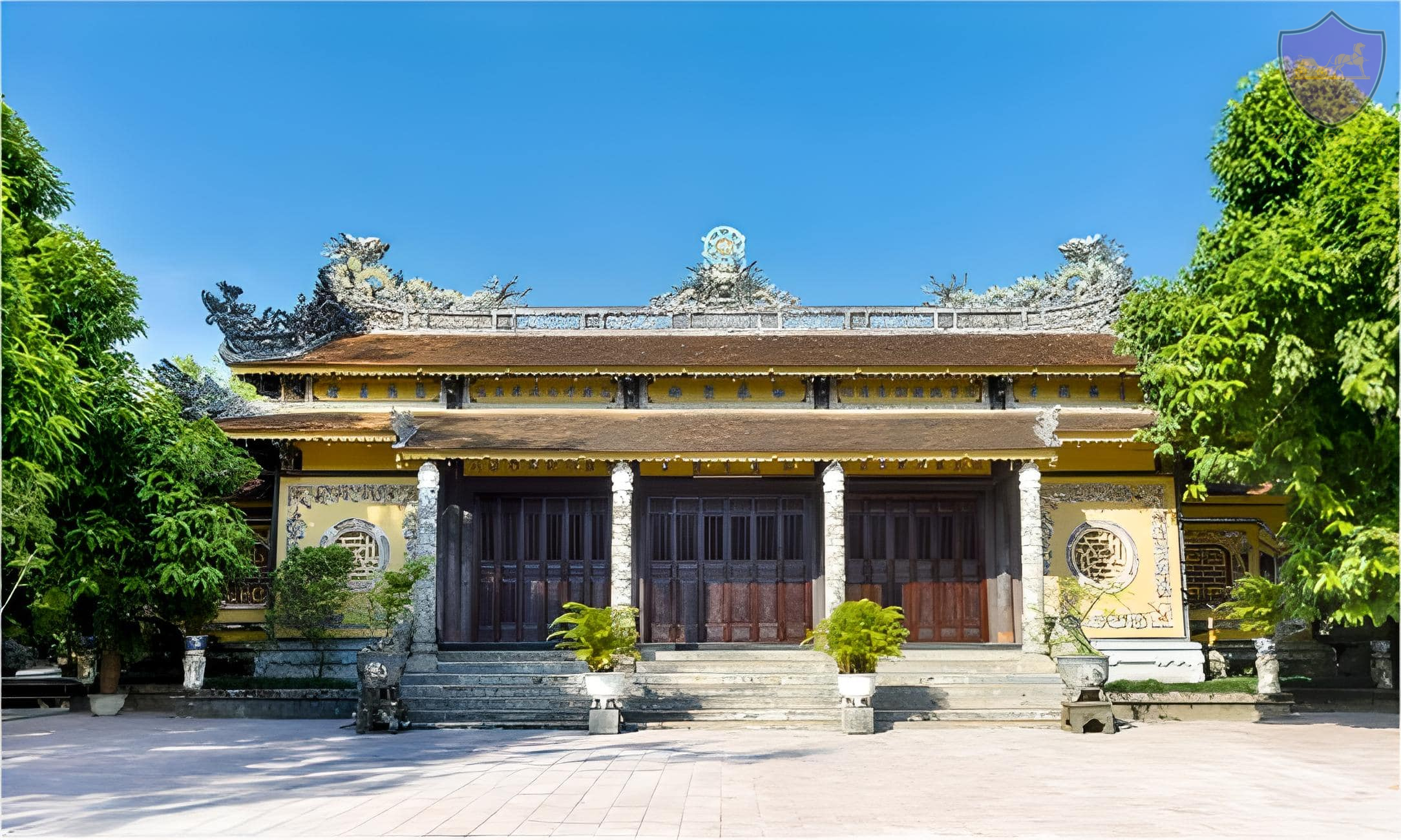
Inside the main hall is the solemn worship area. The Buddha statues worshiped in the main hall are put dignified into glass frames. The highest court in the middle worships the statue of Buddha Tam The and two Bodhisattvas Ksitigarbha. On the next altar is the statue of Buddha Shakyamuni, and two saints, A Nan and Ca Diep. The alter on both sides worships statues of Medicine Buddha and Guan Yin Bodhisattva.
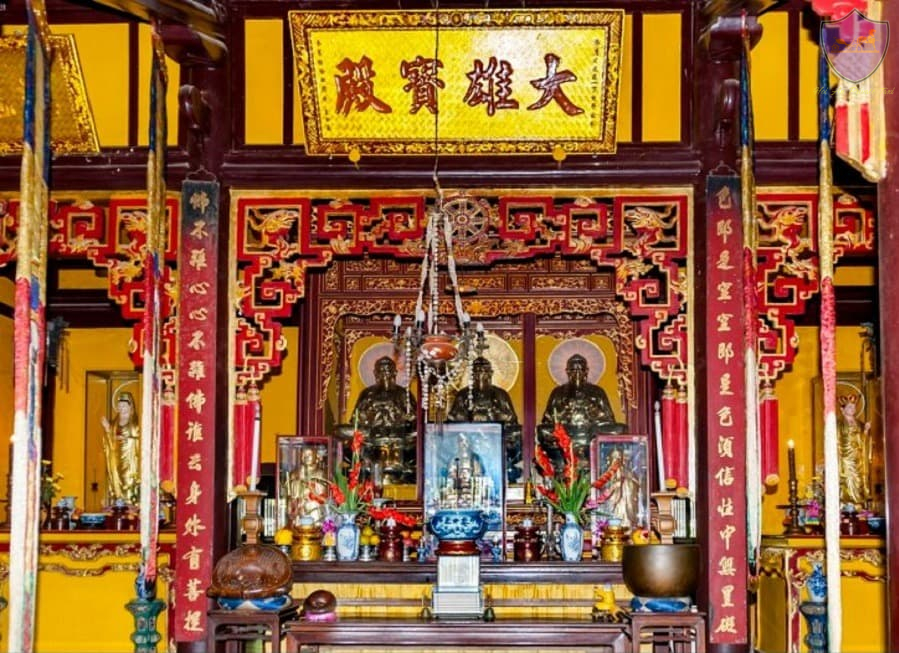
Bao Quoc Pagoda’s Campus
On the left of the pagoda’s yard is the ancestor tower area, and is the tower of Zen Master Giac Phong, the ancestor of the Bao Quoc pagoda. The tower was built in 1714 and is 3.30m high.

In addition, on the premises of the Bao Quoc pagoda, there is also a statue of Guan Yin Bodhisattva. Surrounding the pagoda are perennial green trees with wide foliage, so it is very cool and quiet.
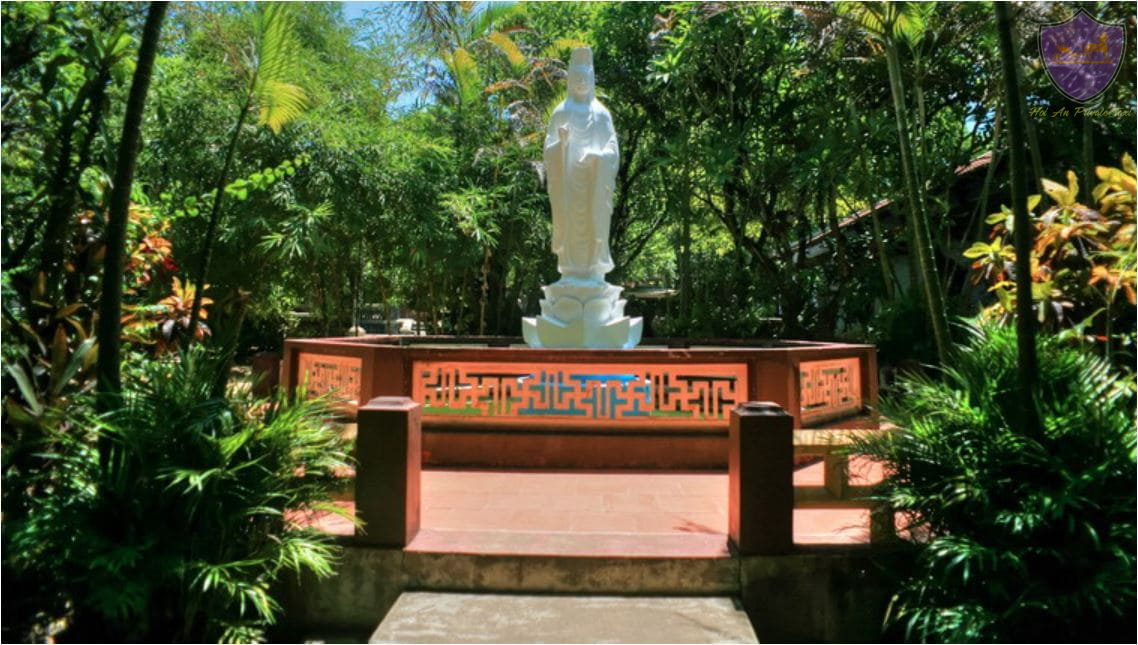
The Ham Long Well
Visiting Bao Quoc Hue pagoda, visitors will hear the story of Ham Long well with many interesting details. In the north of the temple, right at the foot of Ham Long hill is a well that has from the time of the founding of the mountain around 1674. The well is famous for its clear, sweet, and pure water. The depth is about 5 to 6 meters, and at the well, there was a geyser that spewed out like a water cannon, so it is called Ham Long well.
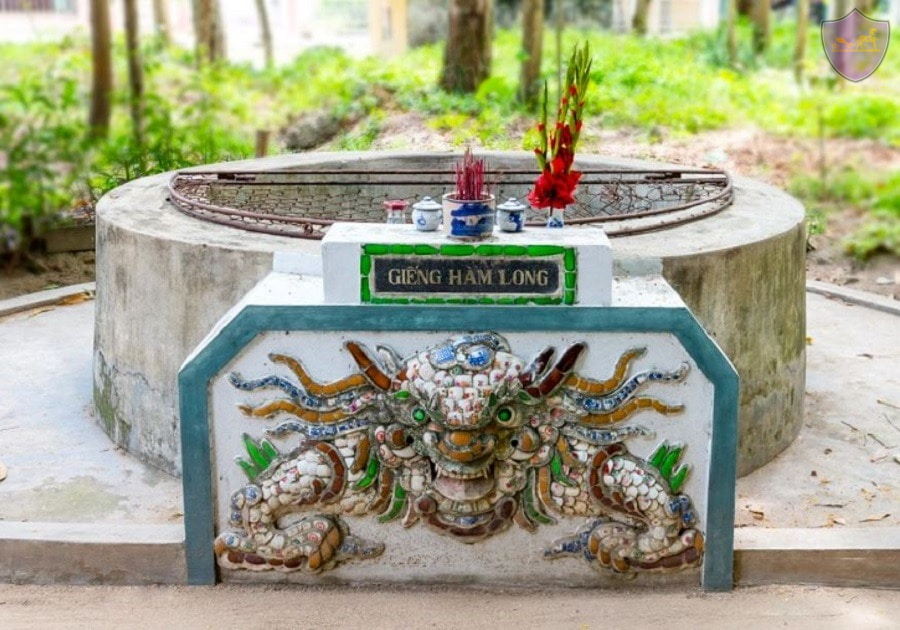
Later on, Ham Long well water was used to offer to the Lords, no one was allowed to use it. Therefore, Ham Long well became a forbidden well, a sacred well in the legend.
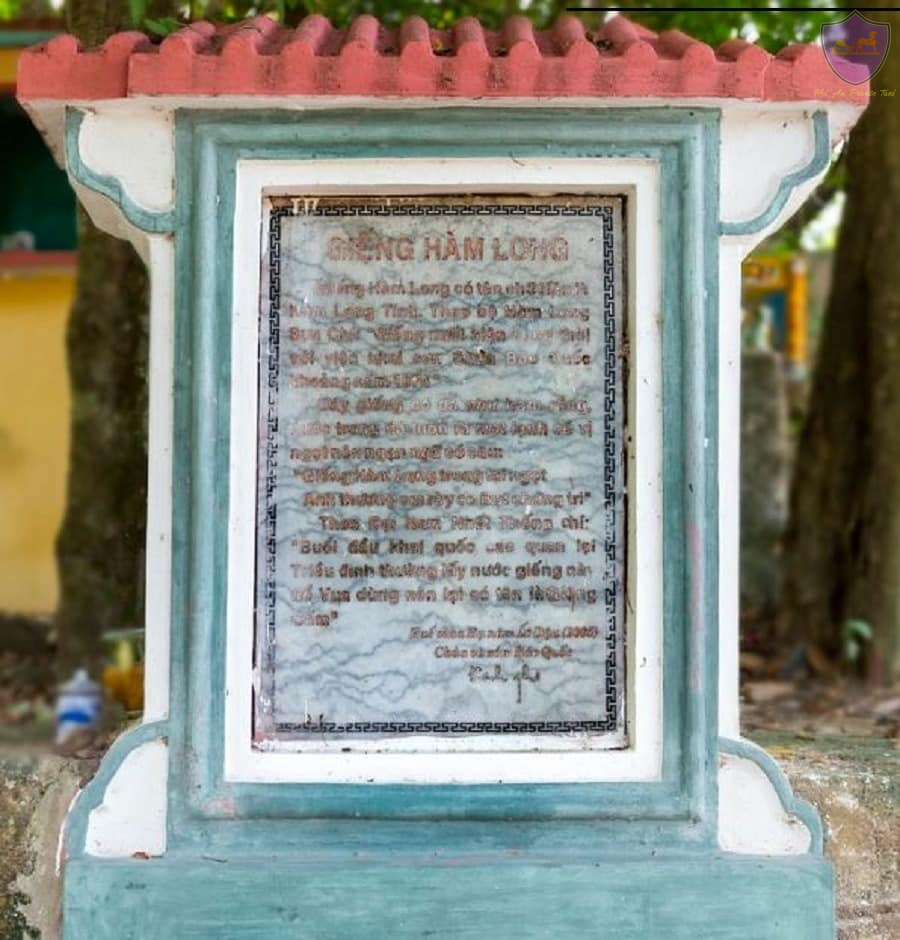
Last but not least, through the many ups and downs of time, Bao Quoc Pagoda has become a sacred and noble spiritual place. Not only a tranquil and peaceful place for the souls toward the Buddha realm, but also a place of solemn worship. Bao Quoc Pagoda is a crucial Buddhist training center in Hue, Vietnam as well.
If you want to visit the pagoda to find some peace for your soul, forgetting the noise and complicated of daily life. Don’t forget to visit the Bao Quoc pagoda once – the famous ancient pagoda of Hue Imperial Capital. However, if you do not have much free time, you can book a Hue City Tour Half Day. It is an optional and flexible Hue city tour to explore the most impressive attractions.
In conclusion, Bao Quoc Pagoda today is not only a sacred place of worship in Hue but also associated with many thrilling stories. This pagoda attracts many tourists to visit and explore. Traveling to Hue at Bao Quoc Pagoda will be a new and unique experience for all visitors. Hoi An Private Taxi wishes you interesting experiences and memorable memories when traveling to Hue.

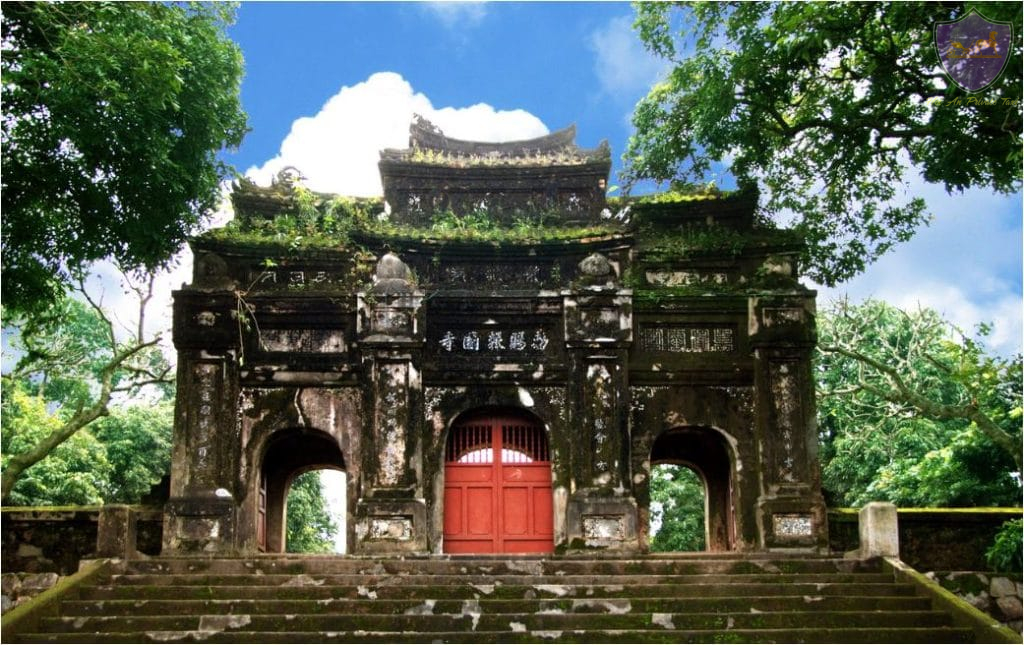

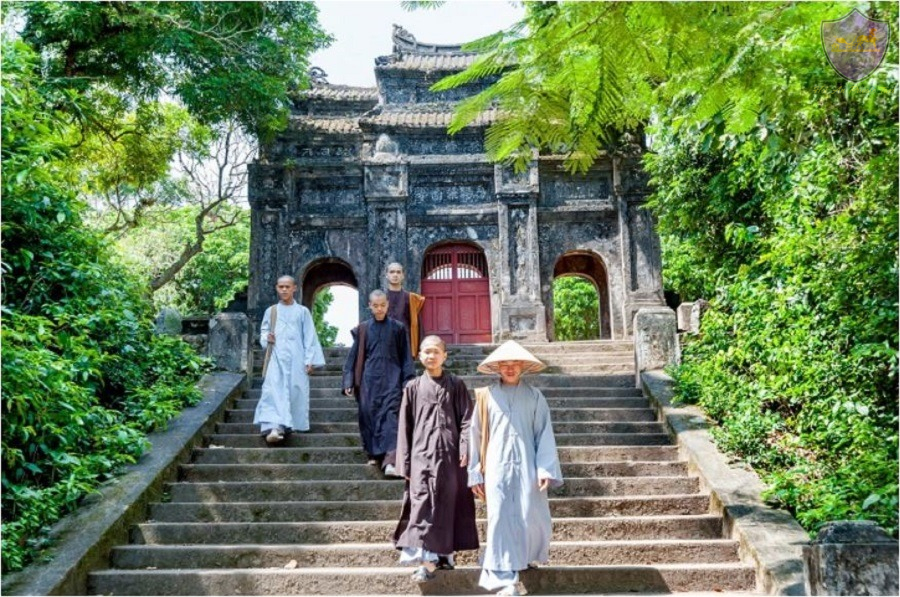

Pingback: Tu Dam Pagoda in Hue City - Phong Nha Locals Travel & Transport